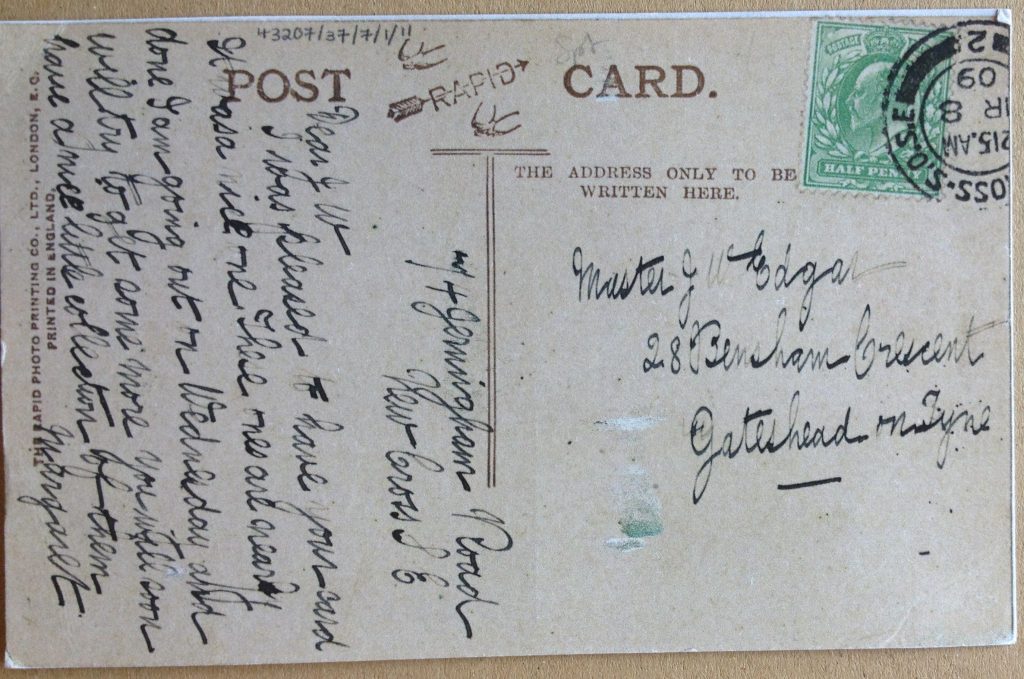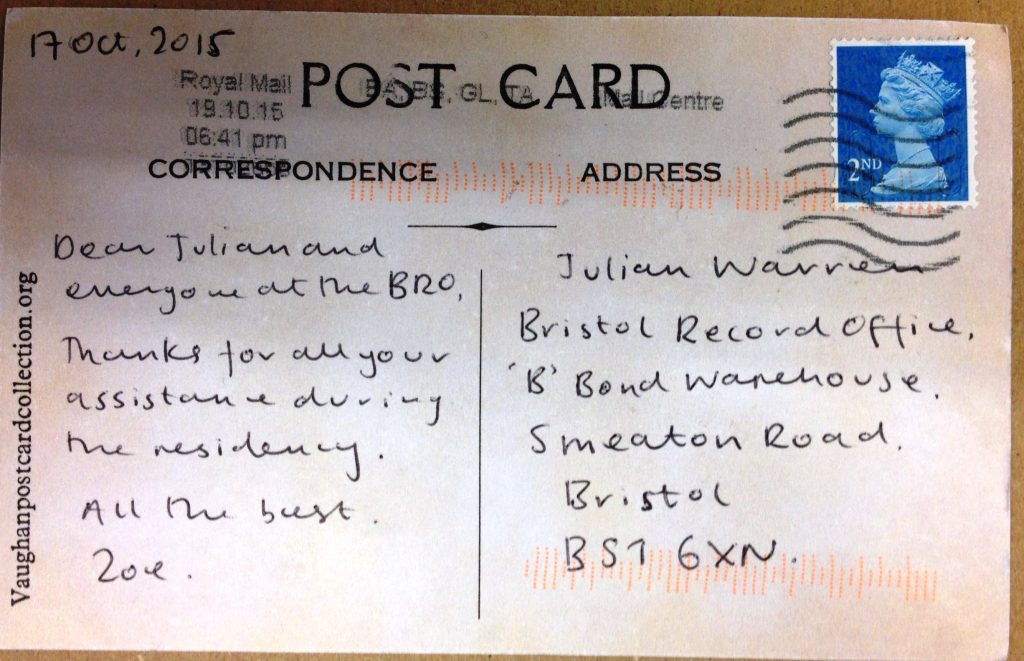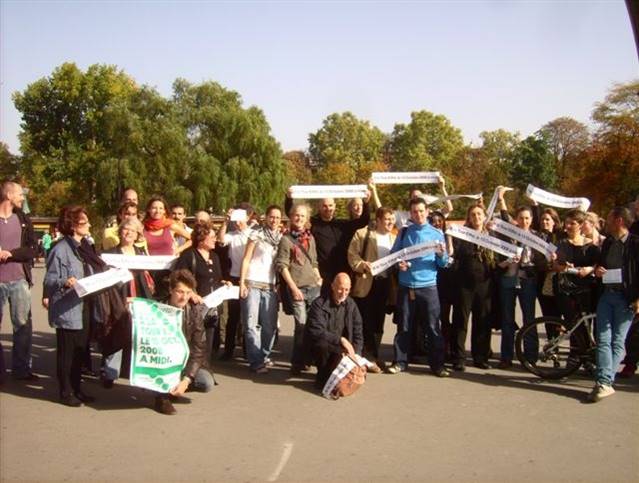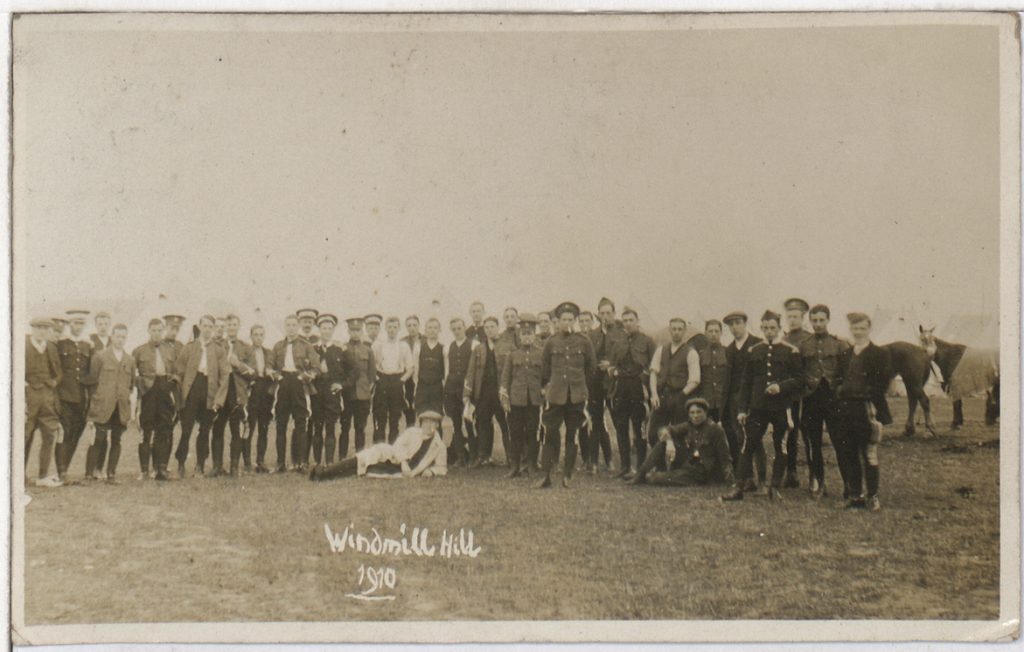To perform an act, Whereof what’s past is prologue; what to come, In yours and my discharge
As part of the University’s Know Your Bristol on the Move (KYBOTM) project last year, we’d worked with volunteers locally to pin digitised versions of the picture side of postcards from the Vaughan collection to the historic maps on Know Your Place, where, located within the spatial context of Ordnance Survey maps from the same period, they could be more readily found and viewed. The result is a kind of partial street view of early 20th century Bristol. You can move through Bristol’s streets on screen, clicking on postcards as you go to reveal images from their past. Together these pictures form a layer of information which is set alongside other layers drawn from the archives that can be clicked on and off – a kind of portable mnemic apparatus for your smartphone or ipad as you travel across Bristol.
But the postcards themselves no longer move. Around 3,000 cards from Vaughan’s collection have been previously used: addressed, stamped and sent across the city, across countries, continents even; messages destined for friends, family, acquaintances; of love, places, future plans, the weather. Robert noted in his blog post how they ‘are not simply images …. they were objects, bought, written on, posted, received and read, and re-read, shared, displayed, sent on …’. Once deposited at the Record Office, however, documents and ephemera don’t move much further from the strongroom stack to the searchroom table; on Know Your Place they remain virtually static, photographs fixed to points on maps on screens – and something intangible, it seems to me, is lost.
Towards the end of her KYBOTM artist residency working with the Vaughan collection, Zoe Tissandier began making new postcards, reproducing handwritten messages in place of the pictures on the front. When one arrived unexpectedly that she had sent through the post it was such a pleasure to receive it – a piece of the collection that had been set on the move again, re-circulating outside of the confines of the archive. Here are the front and reverse of this postcard.

 I recently found out that ‘What’s past is prologue’, Shakespeare’s line from The Tempest, is carved on a plinth outside the US National Archives. It reminded me how much I enjoy the ways archives can open up future possibilities; as leads to be followed, prompts to action; the beginnings of books, plays, art, decisions, relationships, conversations, communities, journeys …. , and of one journey I made in 2008.
I recently found out that ‘What’s past is prologue’, Shakespeare’s line from The Tempest, is carved on a plinth outside the US National Archives. It reminded me how much I enjoy the ways archives can open up future possibilities; as leads to be followed, prompts to action; the beginnings of books, plays, art, decisions, relationships, conversations, communities, journeys …. , and of one journey I made in 2008.
In 2000 the artist Jonathan Monk published a book entitled Meeting #13. There’s a copy in Arnolfini’s archive at Bristol Record Office. The book, produced as an edition of 10,000 (the same number, more or less, as there are postcards in the Vaughan collection), is made from a single concertina folded piece of paper, which opens to reveal the legend ‘A la Tour Eiffel, le 13 Octobre 2008 a midi’. It’s the kind of invitation you might find on the back of a postcard – a short text message arranging a time and place to meet.
I went to Paris to take part in this meeting for the fun of it, with no idea who else – if indeed anyone – might turn up. In the end about 100 or so of us from across Europe attended; a connected community created through a little book. Some of us introduced ourselves to others, swapping stories about our journeys to Paris, tales about how we came by the book, taking a few snapshots for posterity before leaving.
That performance is now past, of course, but it’s very tempting to think buried within Vaughan’s collection of old Bristol postcards there’s a similar potential community. At the Record Office, we’re always open to new ways of getting people to engage with the collections, connecting them to the city’s archives. It’s fun to imagine sending the postcards on their way again, putting them back in the post to reconnect them with places, and people who now live there. Could they work to open up new lines of correspondence with the past, creating unexpected or surprising connections for the present occupants? Might you be intrigued to find some kind of ethereal postcard manifesting itself on your doormat, 100 years after it was first sent? Or simply think nothing of it, putting it out for recycling with the junk mail? We don’t know yet how it’s going play out, and so far Rosie’s not giving much away… but I’m looking forward to seeing what happens.
